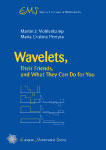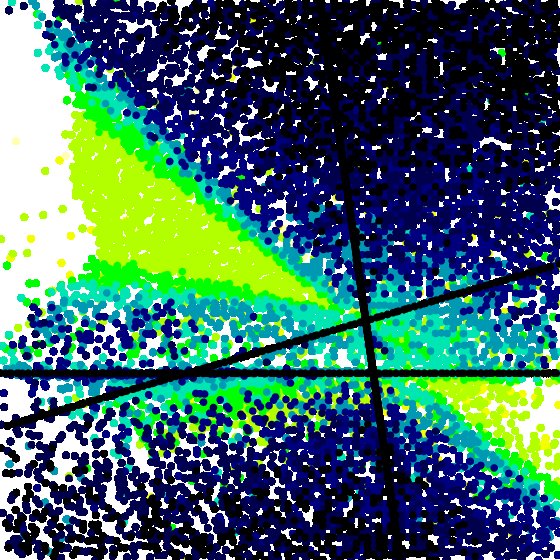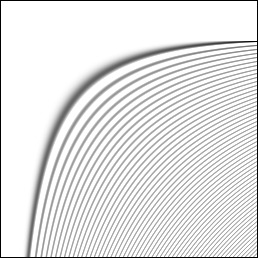- This web page describes an activity within the Department of Mathematics at Ohio University, but is not an official university web page.
- If you have difficulty accessing these materials due to visual impairment, please email me at mohlenka@ohio.edu; an alternative format may be available.
Teaching
Courses
Resources
- Numerical Methods Textbook
- Introduction
to Numerical Methods and Matlab Programming for Engineers.
By Todd
Young & Martin J. Mohlenkamp
- Good Problems
-
We have developed a method to gently teach mathematical writing.
Good Problems: teaching mathematical writing
D. Bundy, E. Gibney, J. McColl, M. Mohlenkamp, K. Sandberg,
B. Silverstein, P. Staab, and M. Tearle.
University of Colorado APPM preprint #466, August 15, 2001.
Up-to-date materials through a Student's Guide.
- Sage Cells
- For Calculus and Linear Algebra.
- Wavelet Materials
- I have organized some wavelet
materials for a short course I taught in 2004.
Research
General Interests
- Applied Mathematics
- Scientific Computing
- Optimization
- Numerical Analysis
- Numerical Methods in High Dimensions
- Machine Learning
- Data Science
Students
- Indupama Herath
- PhD 2022. Multivariate Regression using Neural Networks and Sums of Separable Functions
- Nathaniel McClatchey
- PhD 2018. Tensors: An Adaptive Approximation Algorithm, Convergence in Direction, and
Connectedness Properties
- Ryan Botts
- PhD 2010. Recovery and Analysis of
Regulatory Networks from Expression Data Using Sums of Separable
Functions
Projects and Publications
Numerical Analysis in High Dimensions
It is a common experience in numerical analysis to develop a
very nice algorithm in dimension one or two, discover it is
painfully slow in dimension three or above, and then give up and
go work on other nice algorithms in dimension one or two. The
cause of this is clear: computational costs grow exponentially
with dimension, an effect called the Curse of
Dimensionality. We have developed methods to bypass this
curse by representing multivariate functions as sums of
separable functions. I am now working with
collaborators and students to better understand and improve
the key approximation algorithms.
- Numerical Operator Calculus in Higher Dimensions.
- Gregory Beylkin and Martin J. Mohlenkamp.
Proceedings of the National Academy of Sciences,
99(16):10246-10251, August 6, 2002.
doi:10.1073/pnas.112329799
- Algorithms for Numerical Analysis in High Dimensions
- Gregory Beylkin and Martin J. Mohlenkamp
SIAM Journal on Scientific Computing, 26(6):2133-2159,
2005.
doi: 10.1137/040604959 (preprint)
- Musings on Multilinear Fitting
- Martin J. Mohlenkamp
Linear Algebra and its Applications, 438(2): 834-852, 2013.
doi: 10.1016/j.laa.2011.04.019 (preprint.)
- The Optimization Landscape for Fitting a Rank-2 Tensor with a Rank-1 Tensor
- Xue Gong, Martin J. Mohlenkamp, and Todd R. Young.
SIAM Journal on Applied Dynamical Systems, 17(2): 1432-1477, 2018.
doi:10.1137/17M112213X
(local copy)
- The Dynamics of Swamps in the Canonical Tensor Approximation Problem
- Martin J. Mohlenkamp.
SIAM Journal on Applied Dynamical Systems, 18(3): 1293--1333, 2019.
doi: 10.1137/18M1181389
(local copy, supplementary material)
- Transient Dynamics of Block Coordinate Descent in a Valley
- Martin J. Mohlenkamp, Todd Young, and Balázs Bárány.
International Journal of Numerical Analysis and Modeling, 17(4): 557--591, 2020.
(Journal link)
The Multiparticle Schrodinger Equation
It is notoriously difficult to compute numerical solutions to
this basic governing equation in quantum mechanics, in part
because it is posed in high dimensions. I worked on a multi-year project with many students to adapt
the general sum-of-separable function methods to this problem.
- Approximating a Wavefunction as an Unconstrained Sum
of Slater Determinants.
- Gregory Beylkin, Martin J. Mohlenkamp, and Fernando Perez.
Journal of Mathematical Physics, 49(3):032107, 2008.
doi: 10.1063/1.2873123
(Copyright 2008 American Institute of Physics. This article
can also be downloaded
here
for personal
use only; any other use requires prior permission of the
author and the American Institute of Physics.)
- Convergence of Green Iterations for Schrodinger Equations.
- Martin J. Mohlenkamp and Todd Young.
in Recent Advances in Computational Science: Selected
Papers from the International Workshop on
Computational Sciences and Its Education.
P. Jorgensen, X. Shen, C-W. Shu, N. Yan, editors.
World Scientific, 2008.
(preprint)
- A Center-of-Mass Principle for the Multiparticle Schrodinger
Equation.
- Martin J. Mohlenkamp.
Journal of Mathematical Physics, 51(2):022112-1--15, 2010.
doi: 10.1063/1.3290747
(Copyright 2010 American Institute of Physics. This article
can also be downloaded
here
for personal
use only; any other use requires prior permission of the
author and the American Institute of Physics.)
- Capturing the Inter-electron Cusp using a Geminal Layer on
an Unconstrained Sum of Slater Determinants.
- Martin J. Mohlenkamp
SIAM Journal on Applied Mathematics, 72(6):1742-1771, 2012. doi: 10.1137/110823900
(reprint)
- Function Space Requirements for the Single-Electron Functions
within the Multiparticle Schrodinger Equation
-
Martin J. Mohlenkamp
Journal of Mathematical Physics, 54(6):062105-1--34, 2013.
doi: 10.1063/1.4811396
(Copyright 2013 American Institute of Physics. This article
can also be downloaded
here
for personal
use only; any other use requires prior permission of the
author and the American Institute of Physics.)
Multivariate Regression and Machine Learning
Regression is the art of building a function that approximately
matches the data, and gives a reasonable value at new data locations.
- Multivariate Regression and Machine Learning with Sums of
Separable Functions.
- Gregory Beylkin, Jochen Garcke, and Martin J. Mohlenkamp.
SIAM Journal on Scientific Computing, 31(3): 1840-1857
(2009). doi: 10.1137/070710524
(preprint)
- Learning to Predict Physical Properties using Sums
of Separable Functions.
- Mayeul d'Avezac, Ryan Botts, Martin J. Mohlenkamp,
and Alex Zunger
SIAM Journal on Scientific Computing, 33(6): 3381-3401 (2011).
doi: 10.1137/100805959 (reprint)
- Leveraging high-throughput screening data and conditional generative adversarial networks to advance predictive toxicology.
- Adrian J. Green, Martin J. Mohlenkamp, Jhuma Das, Meenal Chaudhari, Lisa Truong, Robyn L. Tanguay, David M. Reif.
PLOS Computational Biology 17(7): e1009135, 2021.
doi: 10.1371/journal.pcbi.1009135
Trigonometric Identities
Although it seems like there should be nothing new in
trigonometry, we stumbled upon some rather cute identities for
sine of the sum of several variables.
- Trigonometric Identities and Sums of Separable Functions
- Martin J. Mohlenkamp and Lucas Monzon
The Mathematical Intelligencer, 27(2):65--69, 2005.
doi: 10.1007/BF02985795
(preprint)
Spectral Projectors
- Fast Spectral Projection Algorithms for Density-Matrix
Computations.
- Gregory Beylkin, Nicholas Coult, Martin J. Mohlenkamp.
Journal of Computational Physics, 152(1):32-54, 10 June
1999. doi: jcph.1999.6215
Spherical Harmonics
My thesis was a Fast Transform for Spherical Harmonics.
(Like an FFT, but for the sphere.) Completed in the spring of
1997 under the direction of R.R. Coifman at Yale University.
(Abstract, Thesis itself (.ps))
- A Fast Transform for Spherical Harmonics
- Martin J. Mohlenkamp
Journal of Fourier Analysis and Applications,
5(2/3):159-184, 1999.
doi: 10.1007/BF01261607
(preprint)
- libftsh
- is a software library
implementing the transform.
I have also created
A User's Guide to Spherical Harmonics
for those new to the area.
Martin J. Mohlenkamp



